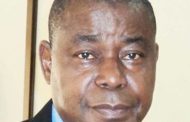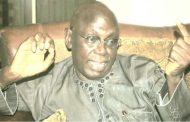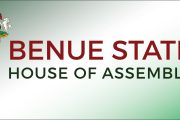Published originally in The Conversation online (Nov 20th, 2016) under the title “Brazil is breaking with its south-south focus. What it means for BRICS”, this piece hints about a trend that could upset emerging global power politics from its newest front, the BRICS. Marco Vieira and Henrique Menezes, the authors, are both teachers of International Relations at the University of Birmingham in the UK – editor.



The leaders of Brazil, Russia, India, China and South Africa at the BRICS summit in Goa, India. Brazil’s position is shaky. REUTERS/Danish Siddiqui
Vladimir Putin’s snub of Brazilian President Michel Temer was one of the most talked about moments of the 8th BRICS summit in India’s seaside resort of Goa. The Russian leader privately met all the BRICS Heads of State except Temer. And in an embarrassing video, Brazil’s Foreign Minister Jose Serra revealed his unfamiliarity with the BRICS group by struggling to remember the names of its members. He couldn’t recall South Africa’s place in the acronym BRICS.
Made up of Brazil, Russia, India, China and South Africa, the eight-year-old formation came with the promise that it would shake up global politics. In particular it promised to challenge the control of global affairs by the West. Brazil seems to be moving away from those ideals, raising questions about its continued membership of the BRICS.
Since Temer took office in August 2016, following the controversial impeachment of his predecessor Dilma Rousseff, the direction of Brazil’s international engagements has undoubtedly tilted back to the sphere of Western interests. His administration is deliberately dismantling the policies and political legacies of Brazil’s former president Lula da Silva, including his foreign policy. One of the central pillars of da Silva’s approach to international relations was the recognition of leading states from the global south as key allies in building a new geography of global politics.
Lula’s strategic focus spurred new models of regional integration and political cooperation. Building relations with bodies like the Union of South American Nations became a priority. But Serra has made public his animosity towards his predecessors’ foreign policy of building close links with left-leaning regional players such as Venezuela and Bolivia. The change of focus is also apparent in Brazil’s relationship with Africa.
Brazil and Africa
The establishment of the India, Brazil and South Africa dialogue forum in 2003 under the leadership of Lula and then South African President Thabo Mbeki was a landmark moment within the context of creating a new model of south-south relations. By the same token, Brazil refocused its strategic and economic agendas towards Africa. This came with a particular emphasis on Portuguese speaking countries and South Africa.
African countries became the recipient of a significant part of the international cooperation provided by Brazil. The importance of the continent is well illustrated by the fact that Brazil dramatically increased the number of embassies in Africa from 2003 to 2008. Only the US, China, France and Russia had more diplomatic missions on the continent than Brazil (37 in total). But Brazil’s new foreign policy calls for a review of Africa’s missions. Serra recently requested a study to account for the costs of the country’s diplomatic representations on the continent. This may have important consequences for relationships as well as cooperation with African countries.
Brazilian contradictions
Under Temer’s predecessor Rousseff, Brazil’s foreign policy lost the impetus and centrality it had shown during the previous eight years. But the general direction was kept untouched. The BRICS is the most emblematic example of the investment of Brazil’s diplomacy since the early 2000s in strong associations among emerging states. As one of BRICS’ founding members, Brazil was led by two presidents who fundamentally shared a set of concerns related to the role and dominance of the US in global governance structures. This is no longer the case.
Despite uncertainties related to Donald Trump’s election, there are indications that Brazil will return to a foreign policy more aligned with US interests. This is likely to lead to tensions with at least two core BRICS states – Russia and China. Temer endorsed the final Goa Declaration. In fact his administration’s rhetoric of alignment with the US and the denial of the legacy left by his predecessors contradicts what was set out in the declaration.
One of the clear contradictions between Temer’s views and the Goa Declaration is reform of the UN Security Council. This position, one of the most important demands of Brazilian diplomacy for at least three decades, has apparently been discarded by Serra.
Also highlighted in the Goa Declaration was BRICS’ support for the multilateral trade regime, underpinned by the World Trade Organisation. This stands against a possible replacement of multilateralism by plurilateral and bilateral initiatives. In his inaugural speech Serra said that Brazil would prioritise bilateral negotiations, a move away from Brazil’s investment in multilateralism within the WTO. This is a view strongly supported by Washington. These inconsistencies make it increasingly difficult to understand the strategy behind Brazilian foreign policy. They also raise two questions: why should Brazil continue in BRICS? And why should the other members accept its continued membership?
From the perspective of its other members, there seems to be some reasonable justification for a BRICS imposed political quarantine on Brazil, at least until the next presidential elections in 2018. In Goa Putin quite blatantly showed his suspicion of, and unwillingness to engage with, the current administration in Brasilia.




























